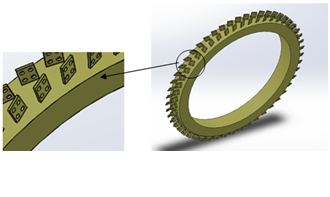
Numerical Investigation of The Effect of Finned Obstacle on Heat Transfer Characteristics in a Rectangular Channel
Corresponding Author:
Caner Şimşek
DOI Number https://doi.org/10.52924/DSMP5780
Received: 05.05.202
Accepted 06.05.202
Published 11.07.202
Summary:
Nowadays, with the development of technology and science, heat transfer holds an important place in engineering applications. In industrial areas, heat increases give rise to overheating, causing system errors. Passive techniques are frequently used to prevent from such disruptions. In this work, fins which are passive techniques which provide heat transfer development with high efficiency and low cost were investigated. To improve heat transfer, finned structures should be well optimized. On the other hand, the designer can prevent mixing the incoming air with the heated air with a bad design, which may cause a negative effect rather than improve heat transfer.In this work, in contrast to previous works that is smooth tube and 0 degree rectangular finned tube, four fin structures were designed and flow and heat-transfer characteristics numerically analyzed. These are crescent finned tube, 20 degree symmetrical imperforated rectangular finned tube, 20 degree asymmetrical imperforated rectangular finned tube and 20 degree symmetrical perforated rectangular finned tube banks with six rows. In this investigation, the geometric parameters were not changed and their effects on flow and heat transfer properties in different Reynolds numbers on these models were examined.The results indicate that the symmetrical structure has better heat transferability and higher friction loss compared to the asymmetrical structure and the perforated fin is higher than imperforated fin but the overall performance is not always superior. Therefore, both symmetrical and perforated finned tube is designed and analyzed with the highest heat transfer potential, it is seen that in terms of heat transferability this model is better than other designs.
Graphical Abstract:
